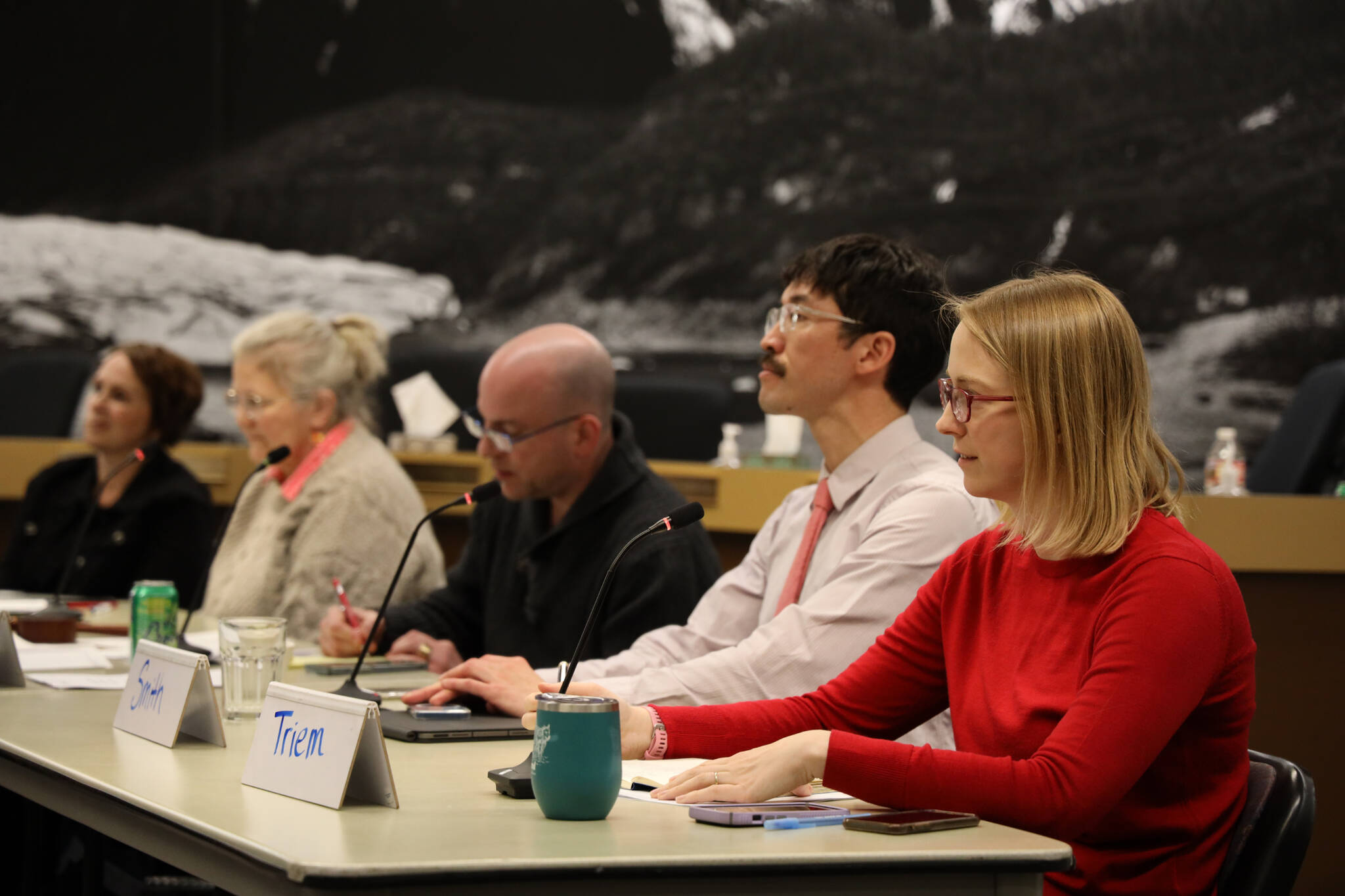With only two decades of expected life left for Juneau’s landfill, city and waste management officials are putting their heads together to seek solutions to solve the growing problem — or at least slow it down.
On Thursday afternoon, a work session was held by members of the Assembly Public Works and Facilities Committee and suitably titled “Talkin’ Trash.” The meeting invited panelists from Alaska Waste, Waste Management and the state Department of Environmental Conservation to answer a series of questions about the near and long-term future of Juneau’s solid waste management and what changes need to be made as the clock ticks closer to the municipal’s only landfill, Capitol Disposal Landfill, expiring.
The short-term solutions discussed largely revolved around finding different ways for residents to divert their waste from the landfill in an effort to extend its life while a more permanent solution is being determined.
According to Ken Simington, district manager at Alaska Waste, the company provides trash hauling service to around 91% of single-family homes in Juneau, and of those households, around 46% also participate in the company’s curbside recycling services.
According to the city, CBJ’s Recycling Center Program diverts around 5% of the local landfill’s annual volume. Jim Denson, environmental protection manager for Waste Management Pacific Northwest, said any amount of waste that can be diverted from the landfill will extend the life that much further, and increased recycling could achieve that.
“It seems reasonable to me where if you were to increase recycling to the point where you would cut the amount of waste going to the landfill by 25%, you’d get 25% more life,” he said.
Another way to divert waste discussed was increasing composting throughout the borough. Data from the Environmental Protection Agency Advancing Sustainable Materials Management suggests food waste makes up around 22% of the total solid waste being brought to municipal landfills across the country each year. That waste theoretically could be diverted via composting, thus extending the life of the landfill that much more.
Though the city itself does not currently provide compost services, a private business, Juneau Composts!, has largely led the movement toward composting in Juneau since its establishment in 2017 by Juneau resident Lisa Daugherty.
According to its website, more than 1.2 million pounds of food scraps have been diverted from the landfill because of its members’ efforts.
In late December the city was earmarked to receive $2.5 million in federal funding toward designing and constructing a commercial-scale compost facility.
The future facility could potentially divert millions of pounds of food scraps, however, according to Denise Koch, city deputy director of Engineering and Public Works, there is likely going to be a long window of time before the money is actually allocated to the city, and even longer before the facility is up and running.
Beyond just the short-term “Band-Aids” mentioned, there were essentially three long-term options discussed including investing in a waste incinerator to essentially burn away Juneau’s waste, expanding the current landfill, creating a new landfill or shipping the waste down south.
Denson said waste incineration machines are typically high-cost and highly regulated, and bringing one to Juneau wouldn’t necessarily solve the problem as it can only burn certain types of waste.
“It may be feasible, but I can tell you it’s not the sustainable choice,” he said.
The idea to create a new landfill was also bounced around, though no specific plans or locations were addressed. Bob Blankenburg, Solid Waste and Pesticide programs manager for the DEC, said a new landfill could cost anywhere from $15 to 20 million dollars, or even more.
Denson said an expansion of the current landfill is “always” better than creating a new one, but the feasibility of doing so could be difficult given its location relative to wetlands and several neighborhoods.
“This is a very, very complex problem that many, many municipalities wrestle with — there is no one thing that can fix this,” he said. “It’s going to be a compilation of many things for Juneau to get where it needs to be, but the hard part about Juneau is you only have 20 years to do it.”
Shipping waste was discussed as a last-resort type of solution, as it would likely be both the most expensive and least sustainable option.
After the meeting, Bryson told the Empire he plans to pitch a materials study to the Assembly Finance Committee in hopes it can be voted in as a line item in next year’s budget, which is currently being built.
Bryson said he thinks it’s important for a material study to be done so that the city and residents have a clear understanding of what types of materials are driving up the waste in the landfill, and if there are solutions to divert those materials.
“We need the community to engage on this and ask ourselves, ‘What does the Juneau community want to see done?’” he said. “Because then we know what direction we should go in.”
• Contact reporter Clarise Larson at clarise.larson@juneauempire.com or (651)-528-1807. Follow her on Twitter at @clariselarson.

